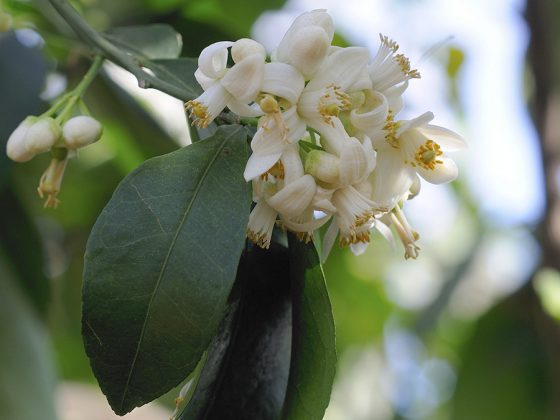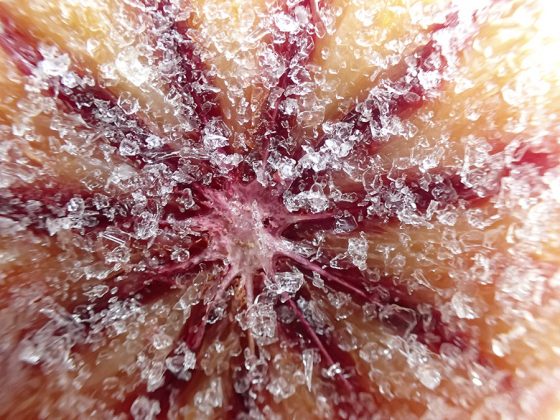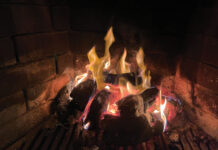Flavors we delight in serve quite different functions in the plants we derive them from — not just appealing enticement but also defense and survival. Even within one plant, different structures hold different tastes. Texture and role of botanical structures are a useful guide to releasing what we want from botanical ingredients.
While domestication — human selection of desirable traits in plants — has shaped many of the plants we use in drinks, the repertoire of chemicals that they produce is functional for them. Botanical tastes have their origins in evolutionary relationships between plants, with their pollinators, pests, diseases and seed dispersers, and the influence of their surrounding environment. Aromatic components are not equally distributed within plants; they concentrate in areas in relation to their purpose. For example, while flowers attract pollinators, leaves must be defended from herbivores.
Base spirit uses carbohydrates created by plants to fuel their energetic demands during growth or to entice seed carriers to consume their fruits and disperse their seeds, such as starch in barley and sugars in apples. Carbohydrates that are converted into alcohol are a basic level of utilizing plants’ resources for our purpose of distilling spirits. There is an even greater array of chemicals produced by plants that we seek out as components of flavor.
Citrus fruits, flowers and leaves serve different functions and contain different flavors. Even within the fruit there are notable differences between limonene-rich peel and central fruit flesh that is high in citric acid. Citrus peel is relatively robust both in serving as protective wrapper around fruit flesh and, through heating, in distillation. There is also little barrier to releasing the oils contained within citrus peel, as this central component of peel flavor collects in reservoirs only covered by a thin membrane. Think of how simply twisting citrus peel over a cocktail creates enough force for it to release aromatic oils. Thus, without prior processing, fresh or dried citrus peel readily releases flavor that is not substantially changed through standard distillation. However, the juicy inner flesh of citrus fruits changes substantially when heated, as sugars caramelize and citric acid oxidizes and decomposes. Capturing the flavor of citrus juice is best done using the low temperature environment offered by a rotary evaporator.
Citrus flowers and citrus leaves also carry their own flavor and require different treatment. Citrus flowers such as orange blossom (Citrus x aurantium) are rich in sesquiterpenes. This group of terpenes often operate as pheromones attracting insects — within the flower a desired role in order for pollination to occur and for fruit to form. Citrus flowers are not robustly constructed, as their function is fulfilled within days. In contrast, evergreen citrus leaves must work effectively for months. While fulfilling their role in converting solar energy into chemical energy to fuel the tree’s growth, leaves must guard against water loss, which is achieved with a tough exterior. Leaves are not served in their function by attracting insects and are in fact often rich in chemicals such as monoterpenes that repel insects. Citrus leaves contain far more monoterpenes than sesquiterpenes. Young citrus leaves are dominated by linalool and older leaves by limonene. Citrus leaves and flowers differ in chemical composition and, consequently, flavor.
Citrus flowers are best treated separately in order to extract the desired aroma. Only light extraction processes are needed to access the heady aroma of citrus blossom. Familiar as an essential ingredient in Ramos Gin Fizz, orange blossom water is made via steam distillation. Putting orange blossom in a basket within the still while distilling where flavor can be lifted by rising vapors is ideal. Citrus blossoms will also rapidly infuse alcohol and water solutions with their flavor at room temperature. However, left infusing for more than a day, their soft fleshy petals start to release vegetal notes into the solvent. While there is no need to crush or cut citrus flowers to access their flavor, tough citrus leaves release their flavor better after their tough structure is softened with heat or broken with mechanical damage. Cutting or tearing citrus leaves assists in releasing their flavor. Citrus leaves work well when infused in base spirit prior to distillation and can be left in the spirit during heating in the still as the alcohol boils.
Even if using citrus blossom and citrus leaf as aromatics in the same product, applying a different extraction process to each of them optimizes flavor captured in the end product. These differences between different parts of citrus plants illustrates interaction between the structure of the part used and how flavor can be extracted. Additionally it highlights how different ingredients are sometimes best treated separately.
Flowers serve the purpose of attracting pollinators, and once a flower is pollinated, its structures that attract pollinators are no longer needed. Hence, flowers as botanical flavors need little processing in order to extract their flavor. Hibiscus — composed of the bracts that surround the petals of Hibiscus sabdariffa — quickly infuses even cold water or spirit with its pink anthocyanins and sour taste. Neither color nor acidity are carried through the distilling process, so hibiscus is used post distillation.
Butterfly pea flower (Clitoria ternatea) is another flower that yields color. Bright blue when fresh, the ternatins — a group of anthocyanins — that cause this are well preserved when butterfly pea flowers are dry. Their tissue-thin petals quickly release color when covered with alcohol or water as a solvent. Within hours, they will create a strongly colored solution. However, left longer than overnight or a day to infuse, vegetal notes derived from more solid structures within the flower — stigma, pedicel, bracts—are released. A member of Fabaceae, the bean family, those vegetal notes are somewhat bean flavored, which is a less desirable aspect in most distilled spirits. As with the anthocyanin-derived color in hibiscus, the blue of butterfly pea does not persist through distillation and should be used post distillation.
Barks used as spices and bittering agents, such as cinnamon (Cinnamomum verum) and cinchona (Cinchona officinalis), provide tree trunks and branches with a tough exterior that protects them from environmental pressures and pests. Barks are tough enough to endure environmental stressors for years. Their components that we experience as flavor, such as aromatic eugenol and bitter quinine, are contained within hard layers that slow their release. Cutting or breaking these barks increases the surface area in contact with solvent and speeds flavor extraction.
Heating is often used to break cell walls within botanicals and allow flavoring agents to be released. Uncoupling heat from the process of extracting flavor allows distillation of elements that are heat sensitive. Fleshy structures such as fruits that contain a significant proportion of water can be frozen to break their cell walls, as the volume of water increases when it turns into ice. Freezing succulent botanicals such as citrus fruits allows their flavor to subsequently be rapidly infused in solvent.
Another means of speeding up the process of infusion, but one that works with all botanicals, not just succulent ones, is sonication. Using a sonicator or ultra-sonicator to release sound applies pressure to botanicals, which disrupts cell walls. This speeds and increases the release of cell contents into the solvent surrounding botanicals. A sonicator, like a rotary evaporator, is a piece of laboratory equipment that is starting to be used within distilling. Rapid aging of spirits using sonication is the most prominent application. During rapid aging, wood chips placed in whiskey, bourbon, or brandy release compounds that usually take years to be yielded by wooden barrels encasing spirit.
Hard and dense structures like barks and evergreen leaves do not easily release their contents. Distillation of these hard materials is more effective if they are cut or heated and allowed to infuse for longer time prior to distillation. In contrast, soft and delicate structures like petals release all their contents readily. Effective use of soft, structured botanicals requires quick processing to selectively capture light aromatic notes and avoid vegetal undertones. Texture is a useful guide in evaluating botanicals and deciding how to extract their flavor.












